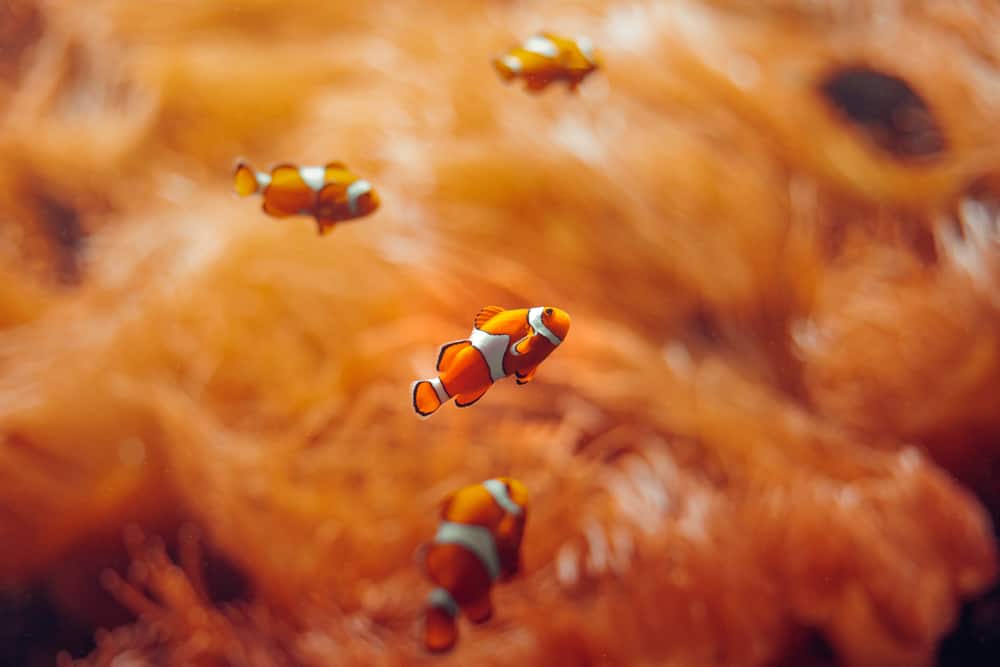
If you’ve recently brought home your first clownfish and you’re starting your first saltwater tank, you’re probably excited about your new friend!
You’re happy to have them, but you can’t help but wonder how big they’ll get.
Will they always fit in their tank?
Most importantly, how fast do clownfish grow?
How Fast Do Clownfish Grow?
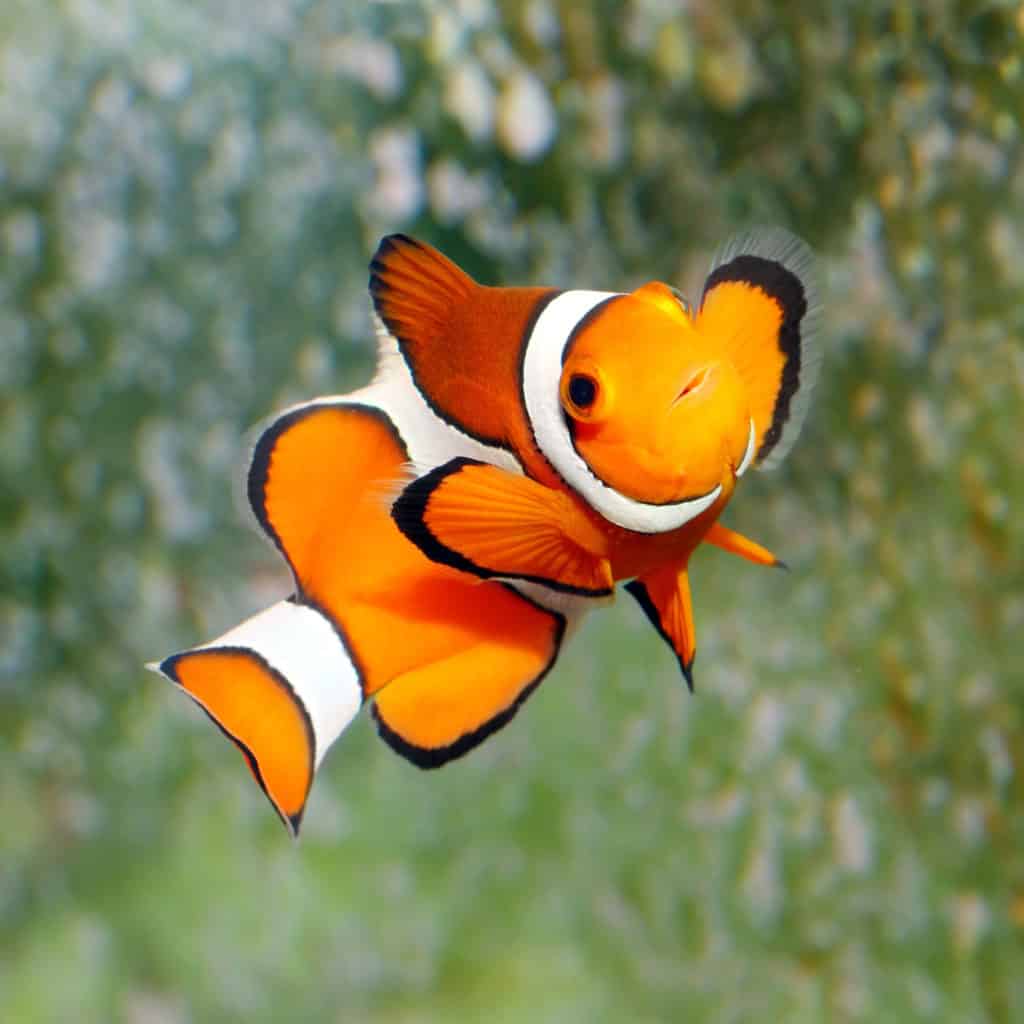
The average clownfish can be pretty slow growers and not reach full size for three years.
However, different clownfish can have different growth rates—it depends on the type.
There can also be other factors involved, such as their diet and the conditions of their habitat.
Size by Species
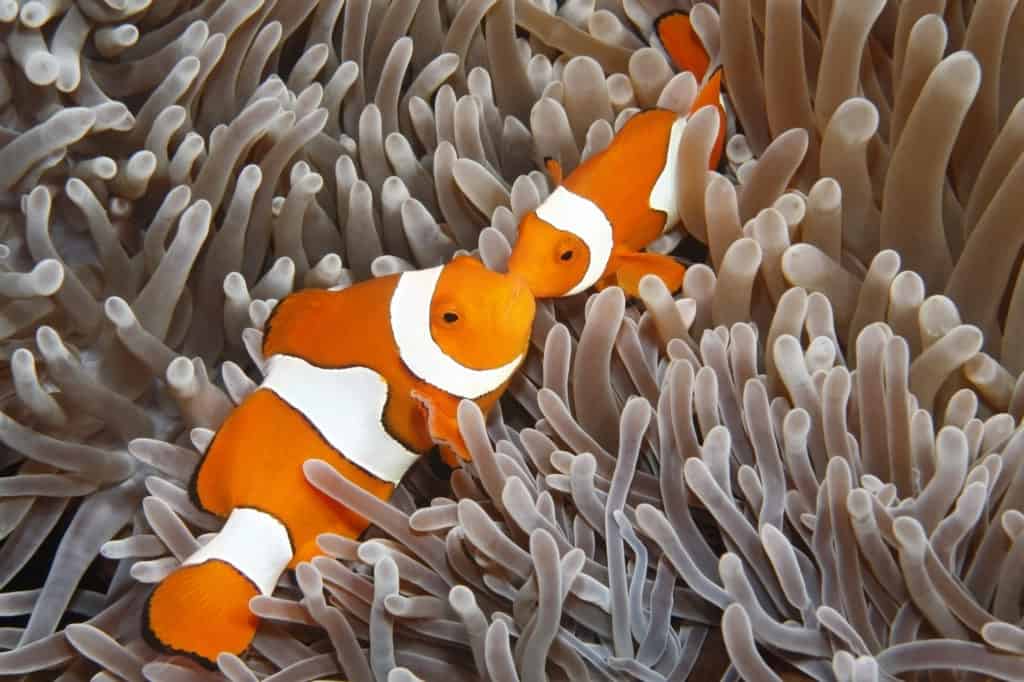
That being said, we feel that we should delve into detail about different types of clownfish and their growth rates.
Darwin clownfish grow in a way that is very similar to Ocellaris in that they will grow about an inch a year.
Tomato clownfish can reach up to five or six inches, and they will grow roughly an inch a year.
Maroon clownfish, like Tomato clownfish, also grow to be between five and six inches at a rate of about an inch a year.
Our final example is the Frostbite clownfish, which can reach a length up to four inches, growing between one-half and a full inch in a year.
You can expect similar growth rates for every type of clownfish if they’re being fed properly.
How Fast Do Clownfish Fry Grow?
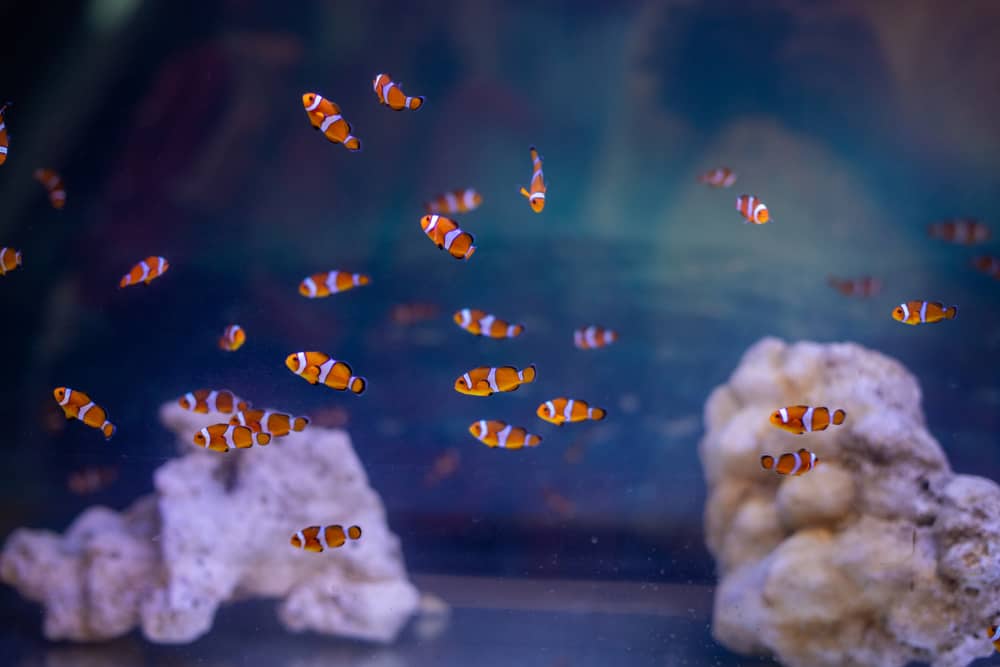
Clownfish fry, no matter the species, will begin to grow as soon as they’re hatched.
Their eggs will hatch somewhere between eight and ten days, and you’ll have clownfish larvae.
After about ten days, the clownfish larvae should begin to change form and become baby clownfish.
Once they’re old enough, the fry should be moved to their own tank to grow to adult size.
They should be fed a proper diet tailored to them as they can’t eat what adults normally would.
Before you can feed your fry, however, you need to know what adult clownfish eat!
Proper Diet
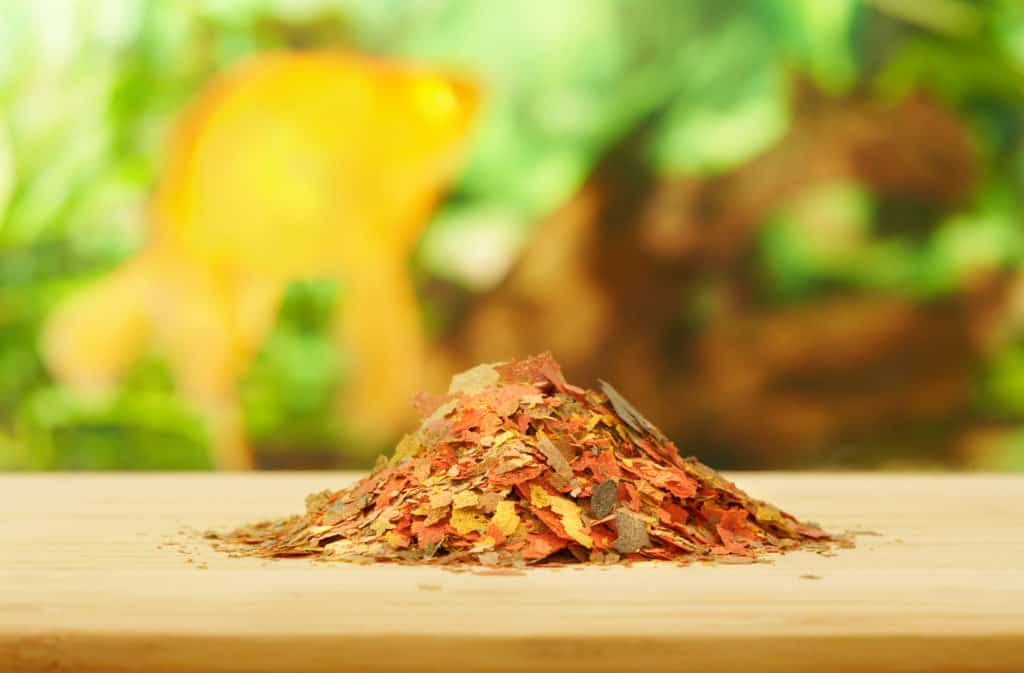
Clownfish are omnivorous, and get most of their nutrients from small zooplankton as well as algae.
You can feed your clownfish a diet of live, frozen, and flake fish food, which is somewhat uncommon for saltwater fish!
You can feed them live or frozen bloodworms, cooked mussels, cockles, chicken livers, shredded octopus, white fish, and peeled shrimp pieces.
You should also feed them vegetables, such as nori and spinach.
Some other good options as far as vegetables go include cooked spinach and chard.
They should be fed at least once a day unless you plan on breeding them.
If you plan on breeding them, give them two or three additional light feedings a day to keep them at their best.
Feeding Clownfish Fry
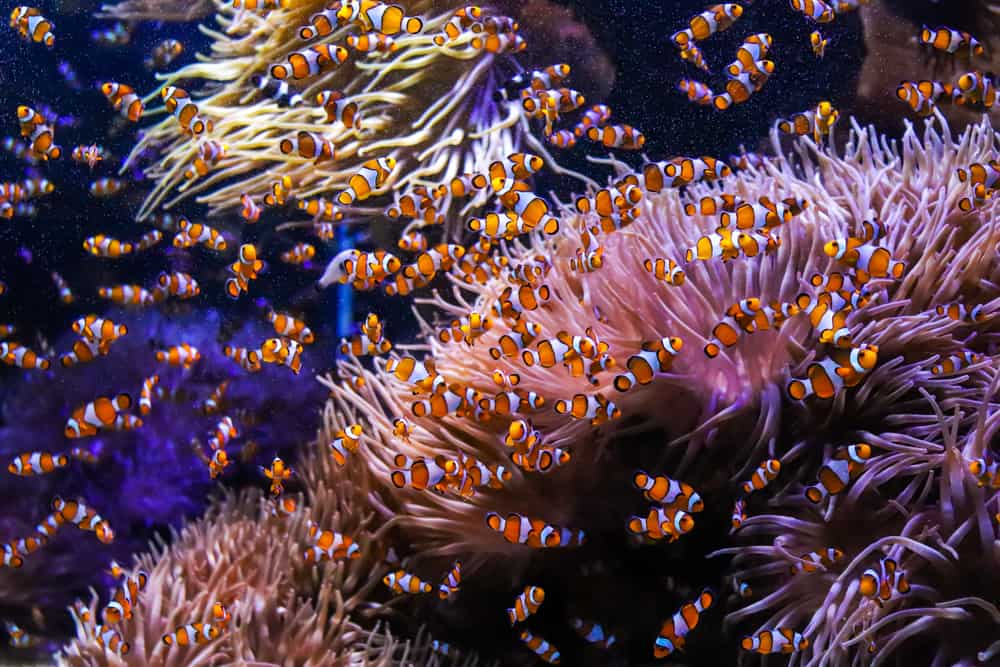
Your newly-hatched clownfish fry need food just as much as any other fish, but their diet needs to be carefully balanced.
In the wild, they feed on plankton and various microorganisms, and since those can’t be found in your tank, they need to be fed rotifers.
Rotifers are tiny multicellular aquatic animals which can be pretty easily obtained.
You’ll want to feed the larvae rotifers for about 10 days, but you can begin feeding them newly hatched brine shrimp after five.
They should be large enough to eat crushed flakes and pellets at about two weeks of age, and they can be introduced to larger foods as they grow.
Remember, just like adult clownfish, clownfish larvae and babies need the right environment to allow them to grow.
How Environment Impacts Growth
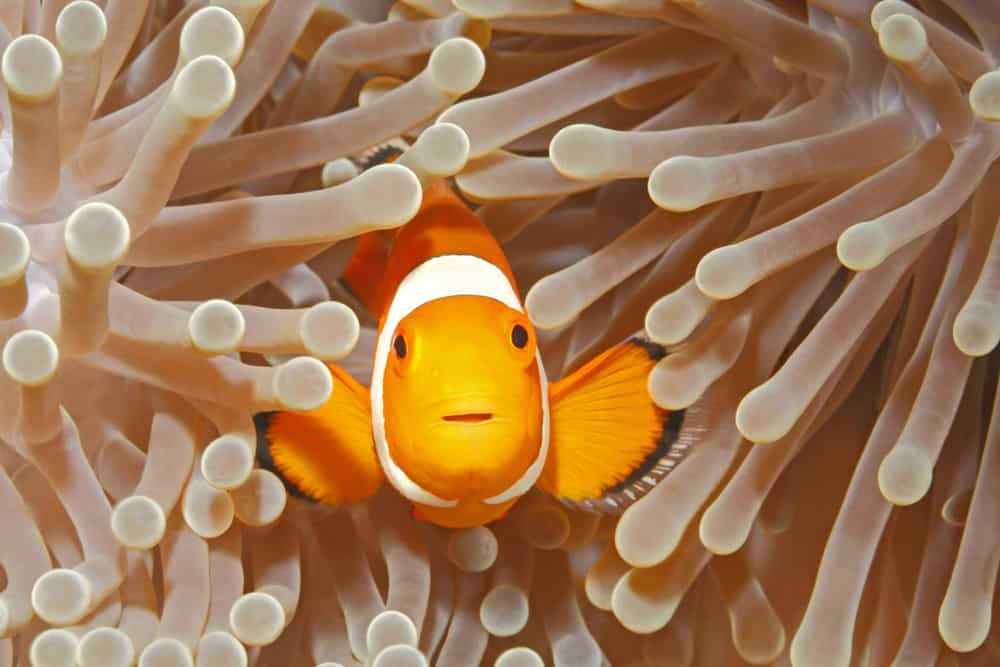
Just because clownfish should grow to be a certain size doesn’t mean they’re guaranteed to get there.
Their habitat and the condition of their tank can also affect growth, and it’s important to provide them with everything they might need.
Clownfish should be housed in a tank no smaller than 20 gallons, and for every clownfish you add, you should increase that by 10 gallons.
As far as water conditions go, they vary depending on whether or not you plan on keeping anemones in with your clownfish.
If so, you should optimize the conditions more for the anemone than the fish.
Anemones require at least a 50-gallon tank, a water pH of between 7.8 and 8.4, and a temperature of 74 to 79 degrees.
If you don’t plan on keeping anemones, your clownfish will be just fine in a smaller tank of 20 to 30 gallons.
The only condition that must be met with clownfish is the fact that they need a specific gravity of between 1.021 and 1.026.
If you’ve met all the environmental requirements and your clownfish still aren’t growing, you may be wondering if there are other issues that need addressing.
Why Aren’t My Clownfish Growing?
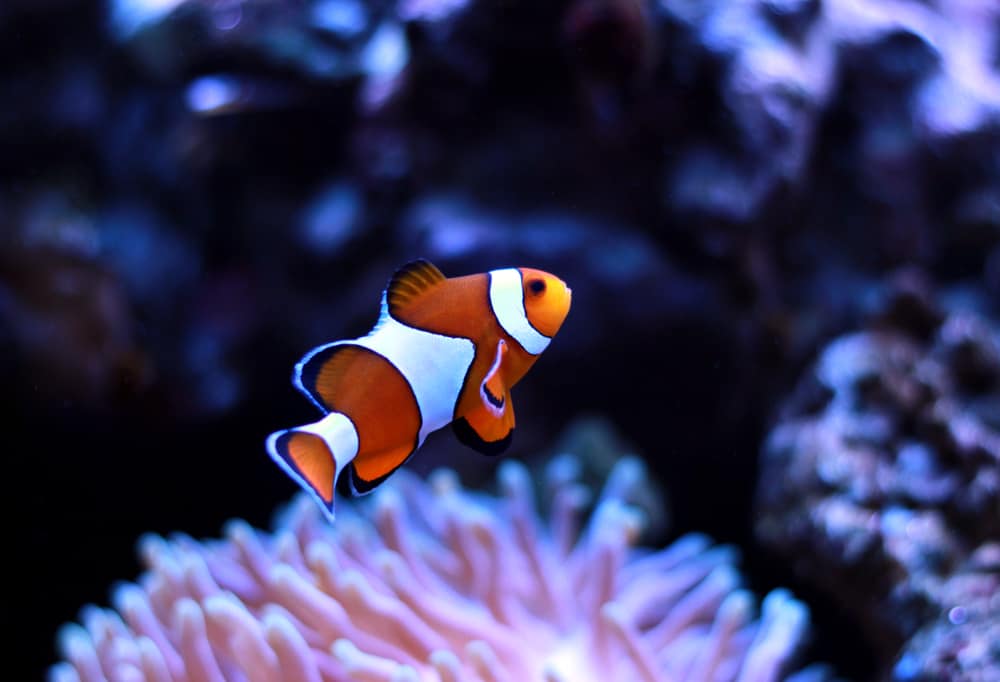
If you haven’t noticed any significant growth in your clownfish, that may not be a cause for alarm.
Clownfish all grow at different rates, and some clownfish won’t reach their expected length, so don’t be surprised if they’re only half the size they “should” be.
If you’re still concerned but have ruled out environmental issues, there isn’t a lot you can do.
As long as your clownfish doesn’t show any signs of illness or odd behavior, they should be just fine.
Illnesses in Clownfish
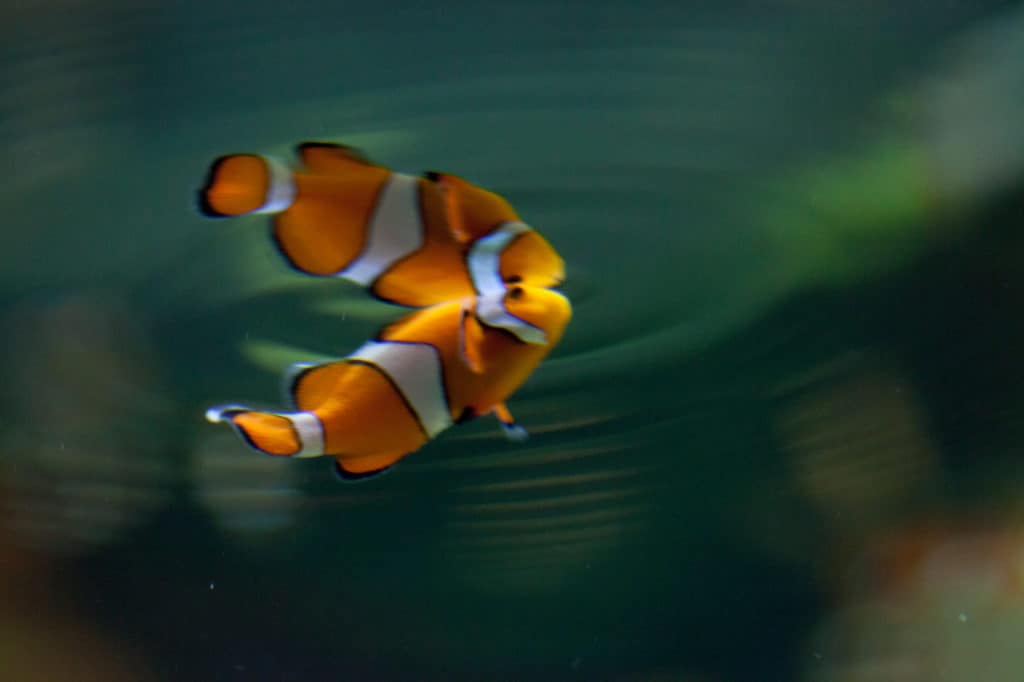
There are a few different illnesses which can directly affect clownfish, and when their health is compromised, their bodies can’t focus on growing.
One such illness is actually known as Clownfish Disease.
Clownfish disease, or brooklynella hostilis, is when a parasitic organism begins to feed on dead skin cells and cause damage to your clownfish’s gills.
Their gills will be swollen, and you may notice them struggling for breath, along with sloughing of the skin.
Clownfish Disease can also spread from fish to fish, even those that are not clownfish.
They can also contract Saltwater Ich, which begins when parasites embed themselves under your fish’s skin to feed on their tissue fluids.
From there, the Ich leaves the fish as a protomont, which will become a tomont after a few hours, becoming a reproducing cyst.
The cysts rupture after a few days and release free-swimming theronts, which will seek out and infect other fish.
The most common sign of Ich are white spots which will be visible to the naked eye.
It’s best to consult a vet with regard to treatment, and keep an eye on your fish for any signs and symptoms of common illnesses.
If they don’t seem to have any illnesses and still haven’t grown, then there’s likely nothing wrong at all, and they’re simply the size they’re meant to be.
No More Clowning Around
Now you know what to expect with your clownfish and how fast they will grow!
Whether these are your first clownfish or not, we hope we’ve helped to answer all your questions, and your fish are thriving in their home.
Just remember that, no matter how fast your fish grow, you’re doing your best to care for them, and they’re doing their best, too!
How much have your clownfish grown since you got them?
Do you have any tips or advice you would like to share?
Leave us a comment down below — we’re always looking forward to hearing what you have to say.
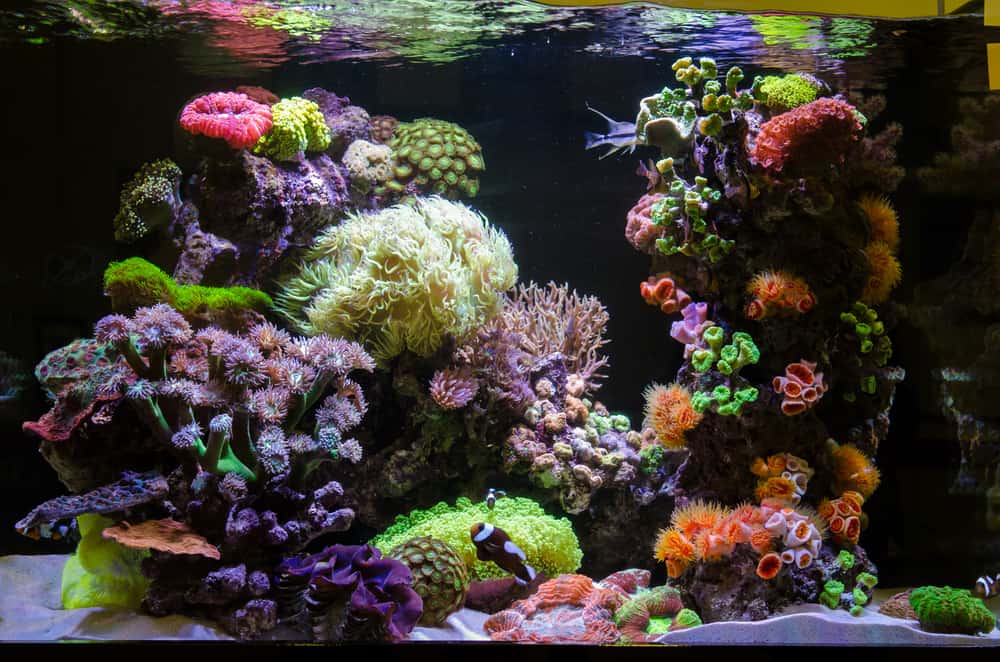
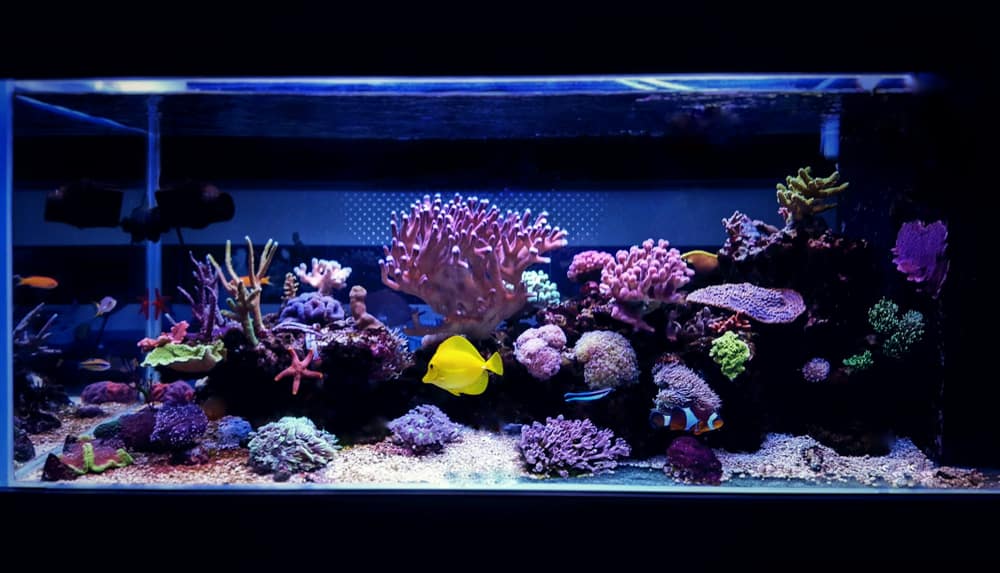
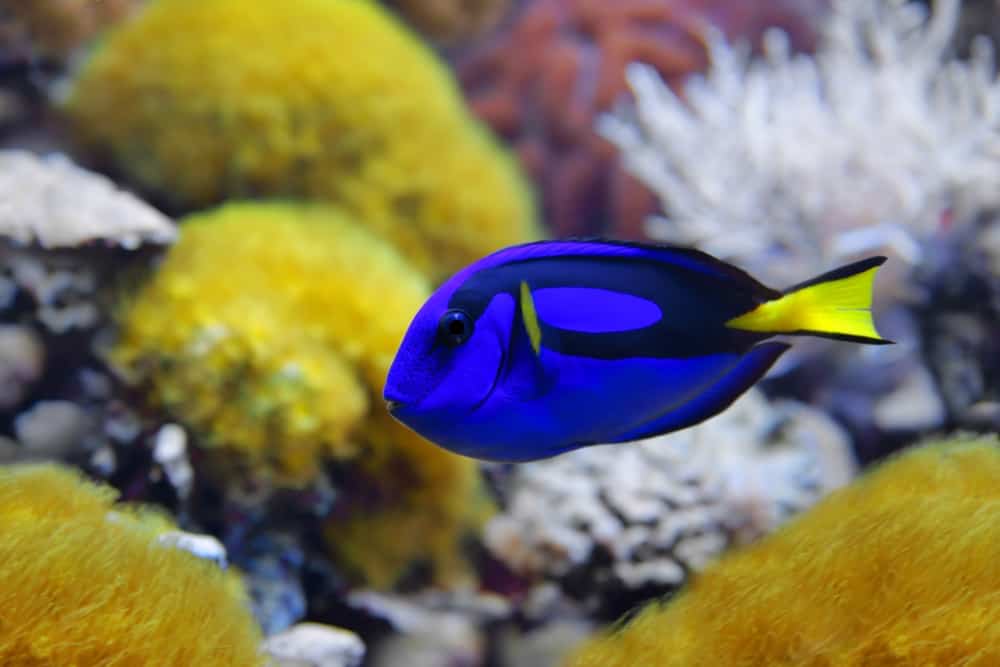
Leave a Reply